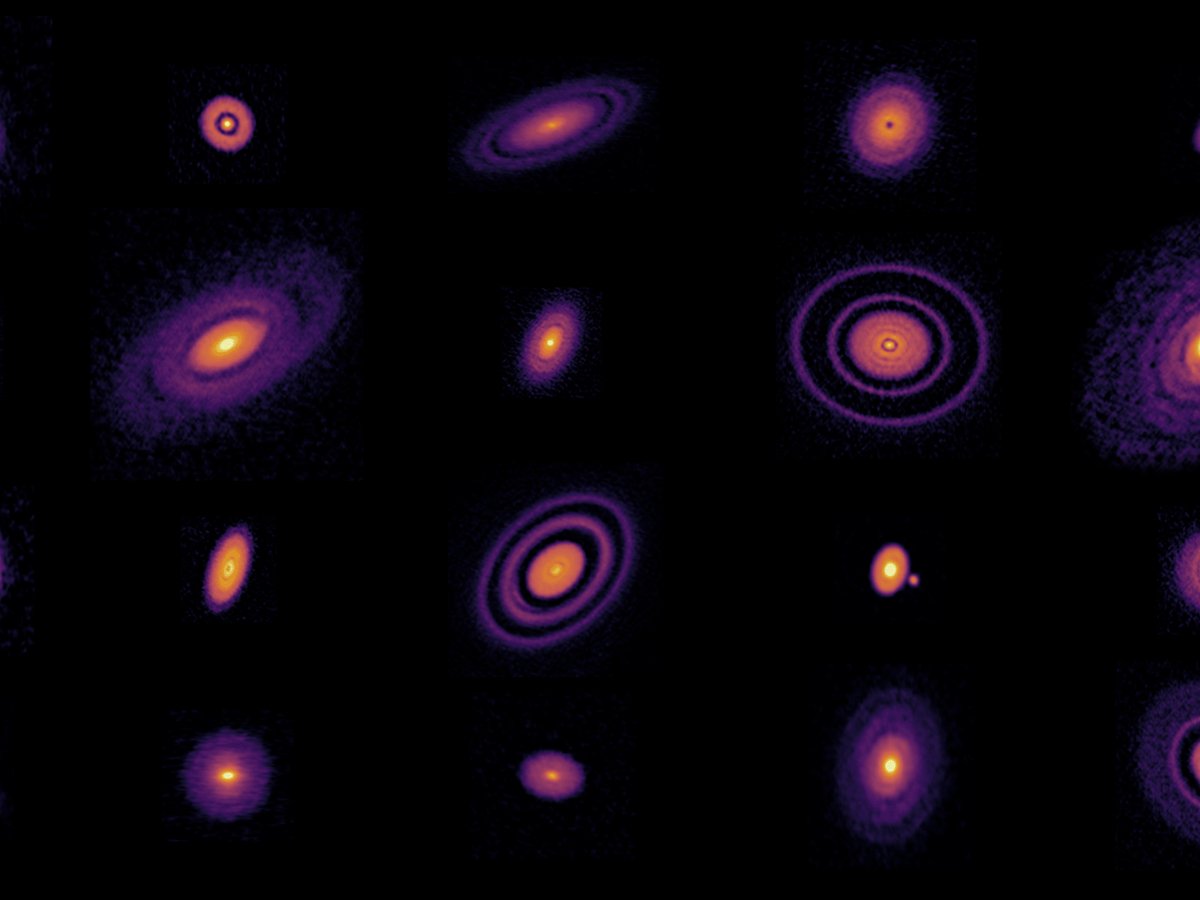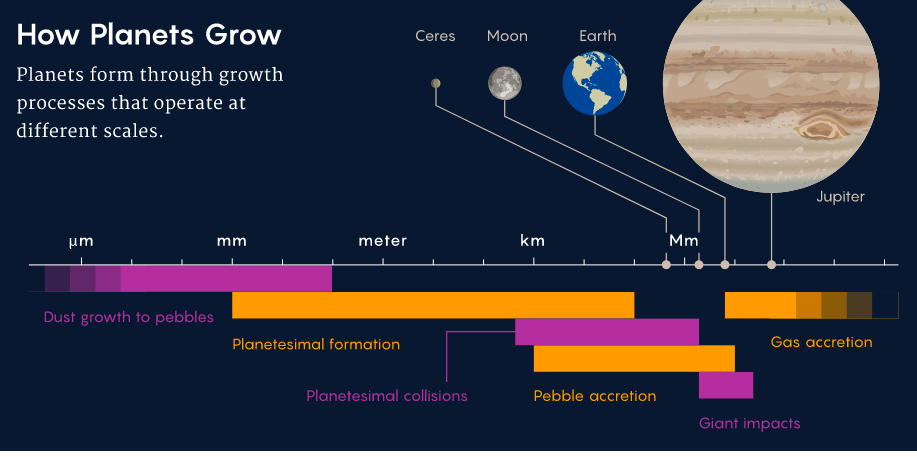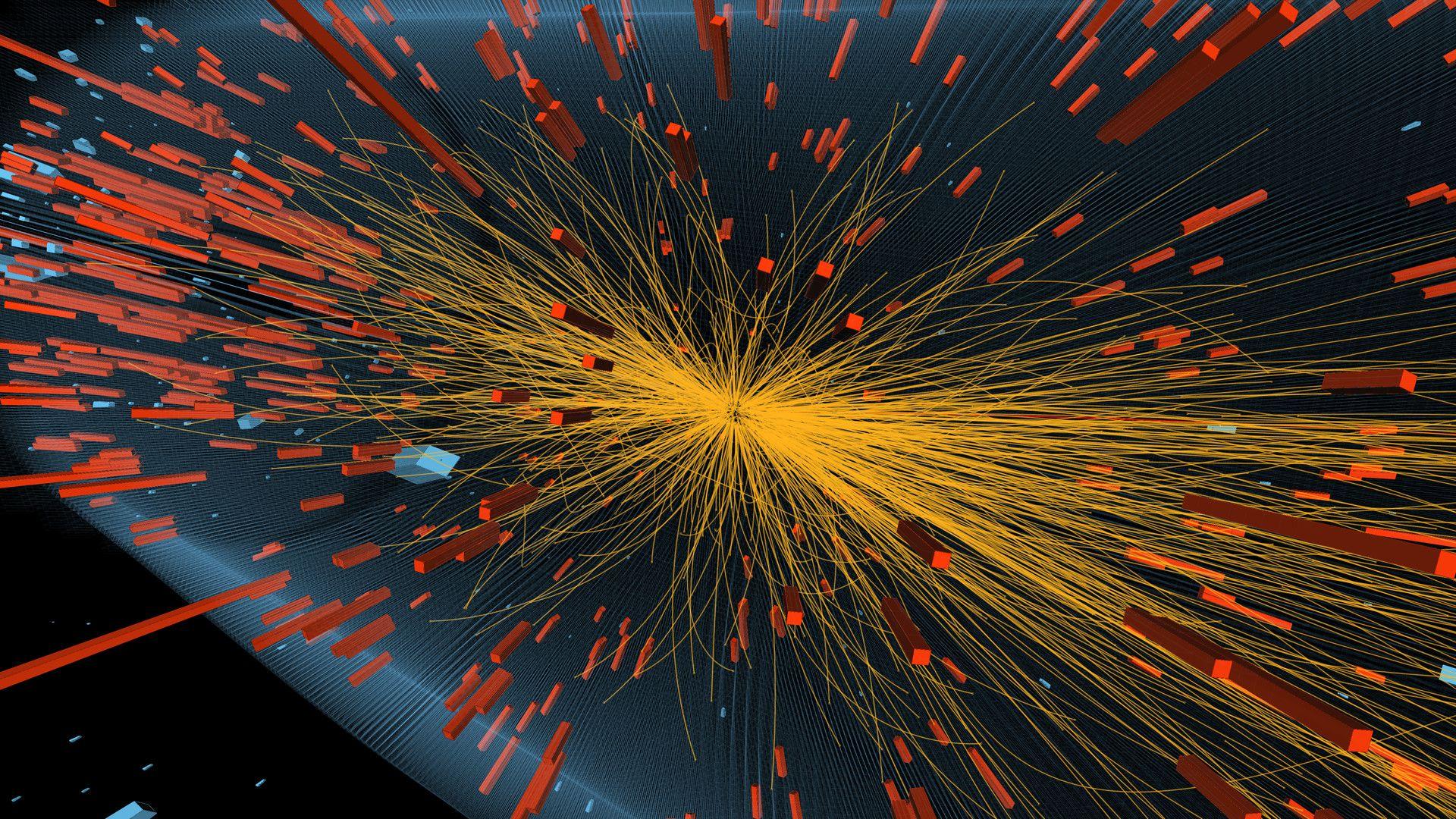

Astronomers Reimagine the Making of the Planets
Posted on Thursday, 06 November, 2025
• By neusler
Astronomers Reimagine the Making of the Planets

at the center, with the sun. Our middle-aged star may be more placid than most, but it is otherwise unremarkable. Its planets, however, are another story.
First, Mercury: More charred innards than fully fledged planet, it probably lost its outer layers in a traumatic collision long ago. Next come Venus and Earth, twins in some respects, though oddly only one is fertile. Then there’s Mars, another wee world, one that, unlike Mercury, never lost layers; it just stopped growing. Following Mars, we have a wide ring of leftover rocks, and then things shift. Suddenly there is Jupiter, so big it’s practically a half-baked sun, containing the vast majority of the material left over from our star’s creation. Past that are three more enormous worlds — Saturn, Uranus, and Neptune — forged of gas and ice. The four gas giants have almost nothing in common with the four rocky planets, despite forming at roughly the same time, from the same stuff, around the same star. The solar system’s eight planets present a puzzle: Why these?
Test your Science
This Basic Physics Quiz is designed to test fundamental concepts of physics in a fun and engaging way. It covers essential topics including motion, forces, gravity, energy, light, electricity, heat, waves, magnetism, and famous scientists.

iphone
apple
kashmir apple
Kashmir apple is renowned for its exceptional flavor and unique aroma, making it a prized variety among apple lovers worldwide. These apples are grown in the picturesque region of Kashmir, where the high altitude and cool climate contribute to their superior taste. Harvested at the peak of ripeness, Kashmir apples are often enjoyed fresh, but they also shine in culinary applications, from desserts to savory dishes.

iphone
apple
kashmir apple
Kashmir apple is renowned for its exceptional flavor and unique aroma, making it a prized variety among apple lovers worldwide. These apples are grown in the picturesque region of Kashmir, where the high altitude and cool climate contribute to their superior taste. Harvested at the peak of ripeness, Kashmir apples are often enjoyed fresh, but they also shine in culinary applications, from desserts to savory dishes.

iphone
apple
kashmir apple
Kashmir apple is renowned for its exceptional flavor and unique aroma, making it a prized variety among apple lovers worldwide. These apples are grown in the picturesque region of Kashmir, where the high altitude and cool climate contribute to their superior taste. Harvested at the peak of ripeness, Kashmir apples are often enjoyed fresh, but they also shine in culinary applications, from desserts to savory dishes.

iphone
apple
kashmir apple
Kashmir apple is renowned for its exceptional flavor and unique aroma, making it a prized variety among apple lovers worldwide. These apples are grown in the picturesque region of Kashmir, where the high altitude and cool climate contribute to their superior taste. Harvested at the peak of ripeness, Kashmir apples are often enjoyed fresh, but they also shine in culinary applications, from desserts to savory dishes.

iphone
apple
kashmir apple
Kashmir apple is renowned for its exceptional flavor and unique aroma, making it a prized variety among apple lovers worldwide. These apples are grown in the picturesque region of Kashmir, where the high altitude and cool climate contribute to their superior taste. Harvested at the peak of ripeness, Kashmir apples are often enjoyed fresh, but they also shine in culinary applications, from desserts to savory dishes.
test poll
| name | add | phone |
|---|---|---|
| madhavan | tn | 674764 |
test test test
The swelling catalog of extrasolar planets, along with observations of distant, dusty planet nurseries and even new data from our own solar system, no longer matches classic theories about how planets are made. Planetary scientists, forced to abandon decades-old models, now realize there may not be a grand unified theory of world-making — no single story that explains every planet around every star, or even the wildly divergent orbs orbiting our sun. “The laws of physics are the same everywhere, but the process of building planets is sufficiently complicated that the system becomes chaotic,” said Alessandro Morbidelli, a leading figure in planetary formation and migration theories and an astronomer at the Côte d’Azur Observatory in Nice, France.
A Star and Its Acolytes Are Born
Astronomers have understood the basic outlines of the solar system’s origins for nearly 300 years. The German philosopher Immanuel Kant, who like many Enlightenment thinkers dabbled in astronomy, published a theory in 1755 that remains pretty much correct. “All the matter making up the spheres belonging to our solar system, all the planets and comets, at the origin of all things was broken down into its elementary basic material,” he wrote.

Time is the essence of the problem. Human curiosity may be unbounded, but our lives are short, and the birth of planets lasts eons. Instead of watching the process unfold, we have only snapshots from different points.
Batygin, the Caltech astronomer, compared the painstaking effort to reverse-engineer planets to trying to model an animal, even a simple one. “An ant is way more complicated than a star,” Batygin said. “You can perfectly well imagine writing a code that captures a star in pretty good detail,” whereas “you could never model the physics and chemistry of an ant and hope to capture the whole thing. … In planet formation, we are somewhere between an ant and a star. now.”
Comments
info: your comment will be sent to the site admin for moderation
Smarter, faster on what matters.
- About us
- Advertise with us
- Careers
- Contact us
- Newsletters
- Poscast advertising
- Cookie Settings
neusler
© 2023 NEUSLER, a neumeral technologies company. All rights reserved.
KOCHI, INDIA
Follow us


